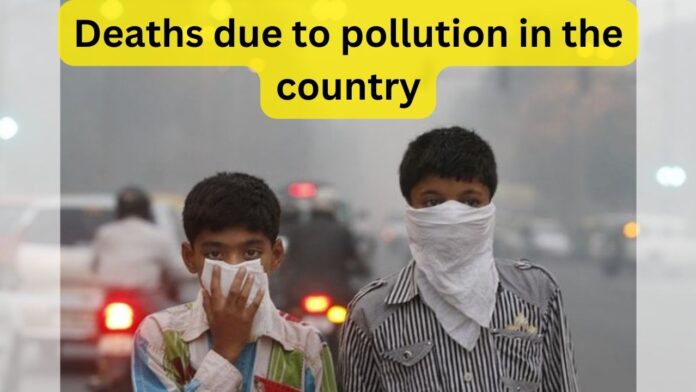Delhi, 25 JUL 2024
There is no conclusive data available to establish a direct correlation of death exclusively with air pollution. Air pollution is one of the many factors affecting respiratory ailments and associated diseases. Health is impacted by a number of factors which include food habits, occupational habits, socio-economic status, medical history, immunity, heredity, etc., of the individuals apart from the environment. Steps taken by the Government to improve the air quality are enclosed as Annexure-I.
Annexure – I
National Clean Air Programme:
- National Clean Air Programme (NCAP) has been launched by Ministry of Environment, Forest and Climate Change (MoEFCC) in January 2019 with an aim to improve air quality in 131 cities (non-attainment cities and Million Plus Cities) in 24 States by engaging all stakeholders.
- NCAP envisages reduction by 20-30% in PM concentration over baseline in year 2017 by 2024. Target has been revised to achieve reduction in PM10 level up to 40% or achievement of national standards (60 µg/m3) by 2025-26.
- City Action Plans (CAPs) have been prepared by all 131 cities and being implemented by Urban Local Bodies.
- The city specific clean air action plans target city specific air polluting sources like Soil & Road Dust, Vehicles, Domestic Fuel, MSW Burning, Construction Material and Industries.
- Performance based financial support is provided to these 131 cities for implementation of activities of City Action Plan.
- Further, funding for implementation of CAPs is mobilised through convergence of resources from various schemes of Central Government such as Swachh Bharat Mission SBM (Urban), Atal Mission for Rejuvenation and Urban Transformation (AMRUT), Smart City Mission, Sustainable Alternative towards Affordable Transportation (SATAT), Faster Adoption and Manufacturing of Hybrid and Electric Vehicles (FAME-II), Nagar Van Yojna, etc. and resources from State/UT Governments and its agencies such as Municipal Corporation, Urban Development authorities and Industrial development authorities etc.
- Public Grievance Redressal Portal (PGRP)/helpline have been developed by all 131 cities to address public complaints of air pollution in timely manner.
- Emergency Response System (ERS/ GRAP) have been developed by all 131cities for taking action in air emergencies
- Under NCAP, an amount of Rs. 19,614.44 crores has been earmarked to 131 cities during the period FY 2019-20 till FY 2025-26 out of which 49 Million Plus Cities/Urban Agglomerations are funded under XVth Finance Commission air quality grant and remaining 82 cities are funded by MoEF&CC under Control of Pollution Scheme. So far, an amount of Rs. 11,211.13 crores was released to 131 cities to implement City Action Plans in their respective cities.
- 95 cities out of 131 cities have shown improvement in air quality in terms of annual PM10 concentrations in FY 2023-24 with respect to the baseline of FY 2017-18. 18 cities have met National Ambient Air Quality Standards (NAAQS) for PM10 (60 µg/m3) in FY 2023-24.
Other steps
- Notification of Ambient Air Quality Standards.
- Revision of emission standards for industrial sectors from time to time.
- Setting up of monitoring network for assessment of ambient air quality.
- Introduction of cleaner/alternate fuels like gases fuel (CNG, LPG, etc.).
- Promotion of ethanol blending.
- Launching of National Air Quality Index.
- Leapfrogging from BS-IV to BS-VI fuel standards.
- Introduction of BS VI compliant vehicles across the country since April, 2020.
- Notification of Construction and Demolition Waste Management Rules.
- Installation of on-line continuous (24×7) monitoring devices by major industries.
- Notification of Graded Response Action Plan for Delhi and National Capital Region (NCR).
- Constitution of Commission on Air Quality Management in NCR and Adjoining Areas (CAQM) etc.
- Installation of Vapour Recovery System (VRS) in new and existing petrol pumps selling gasoline >100kl per month in million plus cities and those selling >300kl per month in cities with population between 1 lakh to 1 million.
- For strengthening monitoring mechanism and effective compliance through self-regulatory mechanism, CPCB directed all 17 categories of highly polluting industries to install Online Continuous Emission Monitoring System (OCEMS).
- Shifting of all operational brick kilns to zig-zag technology.
This information was given by the Minister of State for Environment, Forest and Climate Change, Shri Kirti Vardhan Singh in a written reply in the Rajya Sabha today.

 हिंदी
हिंदी






